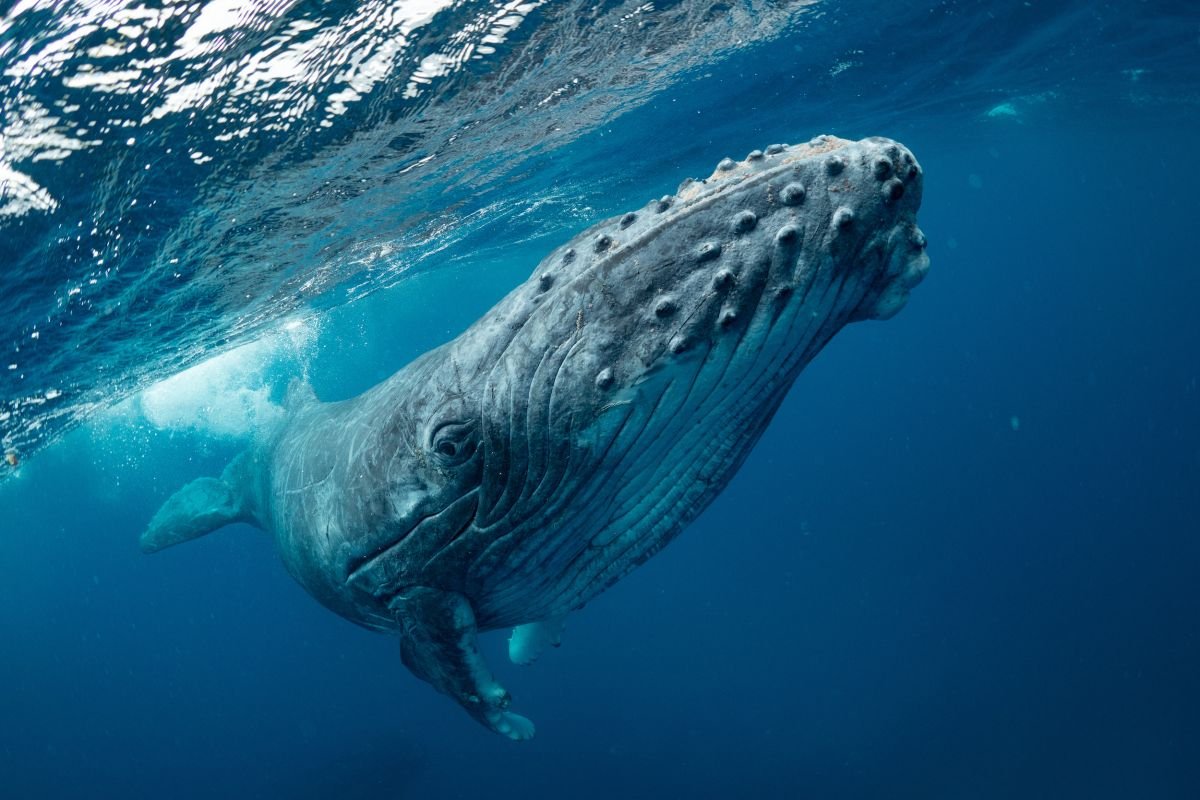Mind Bombs and Mettle
OFF THE COAST OF EUREKA, CA — JUNE 27, 1975 — The small fishing boat dances around the monstrous Russian whaling ship. The Vostok is a floating slaughterhouse where harpooned whales are hauled up by crane and stripped of blubber. From one side of the Vostok, a pipe emerges, streaming blood. The stench of rotting flesh drowns out all smells of the sea.
For an hour, the fishing boat plays “chicken” with the Russians. Holding a megaphone and a sign that reads Нет (nyet), one man pleads in Russian — “Stop Killing Whales!” The hunt continues.
Towards dusk, the Vostok lowers a “catcher boat” to pursue a pod of sperm whales. The fishing vessel spits out three rubber Zodiac craft, each with two men aboard, to give chase. Finally maneuvering between whales and hunters, the Zodiacs pause. They are close enough to see a Russian behind a harpoon gun, its 250-pound spear pointed — at them. The moment seems frozen.
Then the harpooner draws one hand in a slash across his throat. And fires. . .
Fifty years later, with Greenpeace a worldwide voice for the environment, a joke is often told about its origins. “In any bar in Vancouver, you can sit down next to someone who claims to have founded Greenpeace.” But the organization was always, one veteran noted, “a work in progress, not something definitively founded like a country or a company.” This much is known. Greenpeace started with “bearing witness.”
In 1970, after protest failed to stop an underground nuclear test in the Aleutian Islands, U.S. Navy veteran Jim Bohlen and his wife gave up on the Sierra Club’s “Don’t Make a Wave” campaign. Marie Bohlen knew of the Quaker tradition of witnessing violence in hope of rallying others to stop it. Why not sail to the nuclear test site and. . .
A fund-raising concert (Joan Baez, Joni Mitchell, James Taylor) helped the Bohlens and friends lease the Phyllis Cormack, a 82-foot halibut boat. Renaming it Greenpeace, the brave and slightly crazy activists set out from Vancouver to put themselves in harm’s way.
Though they were intercepted by the Coast Guard, word of their audacity spread. Fearing embarassment or disaster, the U.S. canceled further tests on Amchitka Island. The island became a bird sanctuary. And Greenpeace was born.
For the next few years, the small group met in private homes. Greenpeace did not get its first office until 1974. By then, following a similar intervention to stop French nuclear testing in the South Pacific, Greenpeace mentor Bob Hunter had a new focus.
A half-century ago, 30,000+ whales were killed each year. Despite calls for an international whaling ban, eight nations continued the slaughter. Songs, protests, and petitions had no effect. Then an upstart group of “mystics and mechanics” from Vancouver, Canada took protest to a new and daring level.
As a newspaper columnist, Hunter (above left) knew the power of publicity. To change the world, he realized, you have to change minds. To change minds requires a “mind bomb.” Think of the Cuyahoga River catching fire. Think of the face of Emmett Till. Think of Tianianmen Square.
“Bob coined the term ‘mind bomb’ for what today we would call ‘going viral,’” a Greenpeace veteran recalled. “Where an idea gets into the electronic media and just spreads like rippes on the water — instantly.”
Men harpooning whales was not a story. But people putting themselves between whales and harpoons — that was news. And if you brought back the images, you had a mind bomb. First, however, you had to survive.
The Russian harpoon streaked a dozen feet over the heads of Bob Hunter and his Zodiac crewmate, George Korotva. “They could have very easily killed us,” Korotva recalled.
Hitting a bull whale, the harpoon’s grenade exploded. A great scream came across the water. The enraged whale turned and rammed the Russian “catcher.” The Zodiacs continued to circle. More whales were harpooned but Hunter counted eight that got away.
The Greenpeace chased the Vostok south to San Francisco. A week later, when the activists came home to Vancouver, hundreds of cheering people lined the harbor. The mind bomb had detonated. “For the first time in the history of whaling,” the New York Times wrote, “human beings had put their lives on the line for whales.”
Small Greenpeace chapters soon opened across America and Europe. For the rest of the decade, Greenpeace crews confronted whaling ships from Russia, Japan, Norway. . . In a parallel effort, crews slogged across Arctic ice to bring back another mind bomb — the slaughter of baby harp seals.
Minds changed. Laws followed.
In 1986, the International Whaling Commission imposed a ten-year moratorium on all whaling. WIthin five years, from 30,000+ killed each year before Greenpeace, the number dropped to 700. Eight whale species, from blue to humpback, had been on the endangered list. Today, all but two have recovered.
Greenpeace now employs 3,500 people and 30,000 volunteers. Based in Amsterdam, the organization runs several campaigns, from “Go Beyond Oil!” to “Save the Arctic.” But the lessons of its founders remain clear.
Want change? Then A) take risks; B) create mind bombs; and C) do something different.
“Our goal was not to make ourselves famous,” one founder said. “Our goal was to make Nature famous.”











